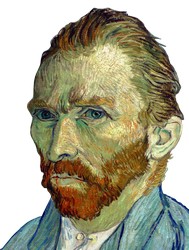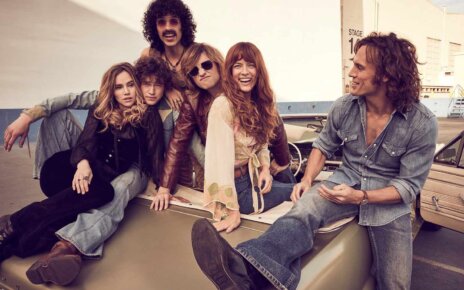Celebrated for his enthralling works of art, Dutch painter Vincent van Gogh was a greatly tormented soul who was followed by a dull sting of ever-present loneliness, alongside strong bouts of mental illness.
The artist would have never known that years after his 1890 suicide, there would be a German woman, Helene Kröller-Müller, who would resonate with his sentiments and provide him with the love and devotion he had never received.
As the first installation of the Monmouth University Center for the Arts film series titled Great Art on Screen, the Univresity presented Van Gogh: Of Wheat Fields and Clouded Skies from 2017 is a stunning documentary directed by Giovanni Piscaglia.
It showcases a wide selection of works by van Gogh, 40 remarkable paintings and 85 drawings, from the Kröller-Müller Museum in Holland.
The film highlights priceless artistic treasures and the architectural beauty of the Kröller-Müller Museum set in De Hoge Veluwe Park in the Netherlands.
Dotted throughout Of Wheat Fields and Clouded Skies are visual extracts of the Milanese, Florentine, Roman and Palladian Renaissance.
Letter passages van Gogh wrote to his brother, Theo, set the pace in exploring Kröller-Müller’s collection.
The artist’s voice is loud, and those acted passages truly set scenes of the places van Gogh lived and stayed in, from Paris to Provence.
Van Gogh was someone who never connected with others around him but found temporary solace in landscapes and studying the natural [clothed] human form.
His adult journey through France was that which most fueled his artistic character.
The artist found himself painting almost constantly, utilizing his impressive background in drawing with charcoals and pencils to pave the way for his paintings, bursting with color and interesting light.
Van Gogh felt harsh rejection throughout his life, romantically having only one sexual relationship with a married prostitute, which ended abruptly.
The painter had limited numbers of acquaintances and friends, and, especially towards the end of his life, he spent much of his time indoors and sheltered from a cruel world.
An artistically-driven upper-class citizen, Helene Kröller-Müller devoted much of her livelihood to purchasing and preserving her astonishing collection of van Gogh.
She felt something divine and spiritual after finding numerous works for sale; Kröller-Müller saw her struggles with mental illness in him.
Kröller-Müller wanted to protect van Gogh’s soul within his art and sought after as many of his paintings and sketches that she could obtain.
While their lives briefly overlapped in the time frame, the dedicated woman continued the painter’s legacy long after his death so that the world would continue to burn bright with his breathtaking creativity.
Vaune Peck, M.A., Director for the Center of The Arts and long-time artist, lended to why van Gogh’s art still inspires so many: “van Gogh was incredibly unique, and he had an abstract sense of movement in his works alongside his distinctive personal style: tumultuous, high-energy, and colorful. Those flowing paintings with short, vivid brushstrokes.”
“Yet, he was plagued by demons, and you can feel that in the work,” Peck continued, “His life is interesting in that it lends mystique.”
Mystified was Kröller-Müller, whose grand dream was to build a massive museum devoted to her extensive art collections, with a room dedicated to van Gogh in the very center.
Though there were obstacles in the construction which altered the scale of the building, Kröller-Müller lived to see her dream fulfilled.
Today, the aforementioned museum in Holland entertains international guests who desire the same brilliant world that Kröller-Müller happily lost herself within.
Peck detailed the importance of excellent art education for students, “Abstract approaches to the arts teach students not to be so rigid in their concentrations and provide multidimensional ways to think through subjects such as mathematics and sciences. Art transcends disciplines.”
“The true impact is being able to express through the arts what you cannot express with words,” Peck concluded.
Currently, Kröller-Müller’s van Gogh collection is on display in the exhibition Of Wheat Fields and Clouded Skies at the Basilica Palladiana in Vicenza, melding her passion for Italy with her love for Vincent’s life.
The beautiful Great Art on Screen series continues at Pollak Theatre throughout the rest of the Spring 2019 semester, with Caravaggio: The Soul and The Blood on March 25, Klimt and Schiele: Eros and Psyche on April 29, and Water Lilies of Monet: The Magic of Water and Light on June 3.
Each screening is at 7:30 P.M. and tickets can be purchased at https://www.monmouth.edu/mca/series/great-art-on-screen/ or by calling the Center for the Arts Box Office at (732) 263-6889.
IMAGE TAKEN FROM coart




